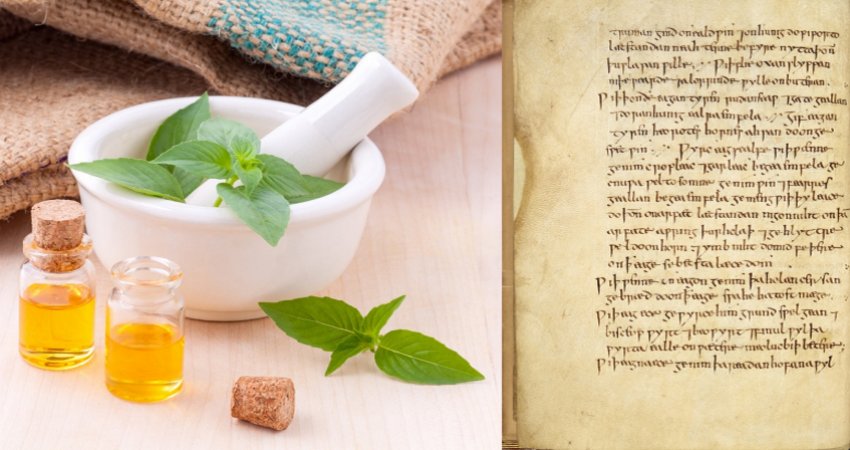Simple 1,000-Year-Old Medieval Medicine Cure Can Treat Modern Infections – Study Shows
Jan Bartek – MessageToEagle.com – Many ancient cultures used plants to treat infections and diseases. Archaeological evidence indicates that the use of medicinal plants dates back to the Paleolithic age, approximately 60,000 years ago.
Herbs can be more useful than most think, and there are many documented cases that show certain plants can be used for a variety of medicinal purposes.

Left: Natural medicine. Credit: Public Domain – Right: A page from Bald’s Leechbook. Its recipes are drawn from Greek and Roman authors and late Antique authors such as Alexander of Tralles as well as physicians with Anglo-Saxon names. Credit: Warwick University
By looking back and investigating how ancient people treated infections, there is still much to be learned. Researchers at the University of Warwick have discovered a simple 1,000-year-old Medieval medicine cure can treat modern infections.
Bacteria can live in two ways, as individual planktonic cells or as a multicellular biofilm. Biofilm helps protect bacteria from antibiotics, making them much harder to treat, one such biofilm that is particularly hard to treat is those that infect diabetic foot ulcers.
Scientists reconstructed a 1,000-year-old medieval remedy containing onion, garlic, wine, and bile salts, which is known as ‘Bald’s eyesalve’, and showed it to have promising antibacterial activity. The team also showed that the mixture caused low levels of damage to human cells.
They found the Bald’s eyesalve remedy was effective against a range of Gram-negative and Gram-positive wound pathogens in planktonic culture.
All of these bacteria can be found in the biofilms that infect diabetic foot ulcers and which can be resistant to antibiotic treatment.
The Bald’s eyesalve mixtures use of garlic, which contains allicin, can explain activity against planktonic cultures, however garlic alone has no activity against biofilms, and therefore the anti-biofilm activity of Bald’s eyesalve cannot be attributed to a single ingredient and requires the combination of all ingredients to achieve full activity.

Medieval people were very interested in and studied medicine. The Schola Medica Salernitana (Italian: Scuola Medica Salernitana) was a Medieval medical school, the first and most important of its kind. Credit: Public Domain
“We have shown that a medieval remedy made from onion, garlic, wine, and bile can kill a range of problematic bacteria grown both planktonically and as biofilms. Because the mixture did not cause much damage to human cells in the lab, or to mice, we could potentially develop a safe and effective antibacterial treatment from the remedy,” Dr. Freya Harrison, from the School of Life Sciences at the University of Warwick explained.
“Most antibiotics that we use today are derived from natural compounds, but our work highlights the need to explore not only single compounds but mixtures of natural products for treating biofilm infections.
We think that future discovery of antibiotics from natural products could be enhanced by studying combinations of ingredients, rather than single plants or compounds. In this first instance, we think this combination could suggest new treatments for infected wounds, such as diabetic foot and leg ulcers,” she added.
“Our work demonstrates just how important it is to use realistic models in the lab when looking for new antibiotics from plants. Although a single component is enough to kill planktonic cultures, it fails against more realistic infection models, where the full remedy succeeds,” Jessica Furner-Pardoe, from the Medical School at the University of Warwick said.
Written by Jan Bartek – MessageToEagle.com – AncientPages.com Staff Writer










